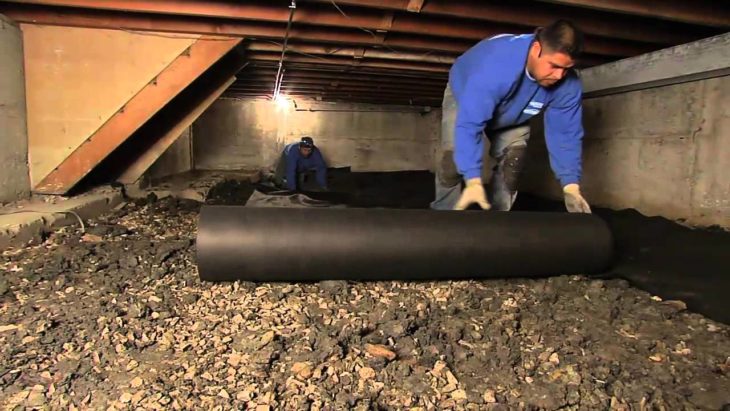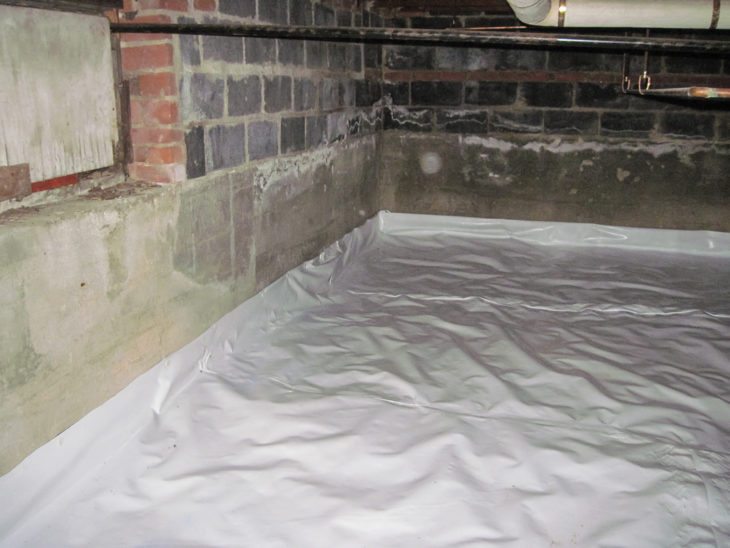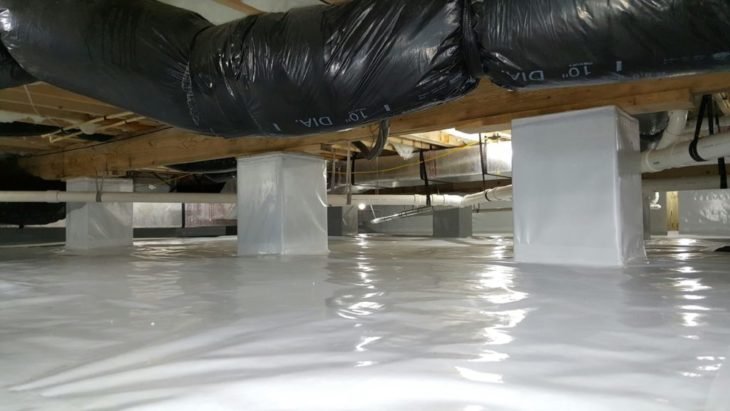Crawl space waterproofing is the sealing of your place from moisture and creating a dry environment under your home. Due to where this space is situated, it can be prone to leaks, standing water and water damage. When this happens, it causes health and safety issues for your family and home.
Consequently, it’s vital that all homes maintain a dry and mold-free basement. If you are building a new home, then we suggest having this service completed during the construction phase. If you just moved into a new house, it is important to check the current state of your crawl space. If there is water everywhere – or signs of mold/dampness – then it needs to be waterproofed.
The question is; how do you waterproof a crawl space? Over the years, we’ve seen various techniques in use. So, in this guide, we’ll explain the next big thing in waterproofing.
Contents
How do you go about crawl space waterproofing?

Source: YouTube
Effectively, there are different solutions to play here. In the past, the only method was to lay down a vapor barrier on the floor. This kept the flooring dry, but it didn’t do much else.
Nowadays, we call upon a variety of techniques. To start, you have to look at your exterior drainage system. All your gutters, drains and pipes need to point away from your property. Many crawl spaces end up with water leakage because the drainage system leads back to the home. Water has to drain away from home, reducing the chances of any intrusion and thus, damage.
Not only that, but we have to concern ourselves with all the equipment and machinery in your place. Most people have water heaters in there, plumbing work, HVAC systems, and much more. A lot of moisture and water damage comes from leaks and mechanical issues with these items. So, a thorough check of all equipment is required to ensure no issues are present. If there are some issues, then those issues have to be fixed before anything else happens.
An interior drain system is often used to help waterproof as well. This helps lead any water out of the crawl space, far away from it, and away from the foundation of your home. The best way to do this is with a sump pump. A sump pump is commonly used in basements that contain pooled water that needs to be removed.
What is crawl space encapsulation?
Now, it’s time to talk about the next big thing in waterproofing; encapsulation. In essence, this is the process of completely sealing off you place with materials designed to prevent moisture issues.
This is a modern idea, and it’s born from the old way of repairing. In the past, a vapor barrier was laid on the floor. Now, encapsulation takes things much further. The walls and ceiling are also protected by vapor barriers. This barrier prevents moisture from entering the locale from the outside. It’s particularly helpful during wet weather and humidity. Also, any old insulation is removed and replaced with a more updated version. You get efficient R12 value insulation – or one that meets the requirements by the Building Codes in your area. As such, the whole placement is now sealed off from the outside world.
What are the benefits of crawl space encapsulation?

Source: Sylvane
For one, it definitely helps keep your basement dry. Part of the encapsulation process involves treating any existing structural issues. This involves problems with wood rot, dampness, mold, and pooled water. So, you basically get your crawl space back to how it looked the day it was created. From here, all the barriers and seals are installed to protect the area from any outside moisture totally.
Alongside this, the presence of new insulation makes it more energy efficient. You could save up to 20% on energy bills each month as it helps regulate the temperature in your property.
Additionally, encapsulation helps prevent issues with HVAC systems. When the temperature gets too warm, your HVAC unit works overtime to supply cool air. As a result, you will often see problems such as coolant leaks. Thanks to a newly regulated temperature, your HVAC system doesn’t need to work as hard. Therefore, the chances of leaks from equipment are reduced.
Why do you need to waterproof your crawl space?
On a basic level, waterproofing is required to keep water out. That’s obvious, but why is this so essential? Well, when water gets into your placement, then you’re asking for trouble. Firstly, think about all the electrical wiring you have down there. If there’s too much moisture, then you can see issues with your electrical system – and possibly even have blown fuses.
But, perhaps more importantly, what happens when moisture and water get into your wooden foundation? It leads to wood rot, which basically eats away at the wooden structures beneath your home. In turn, this can cause the floor of your basement to cave in or end up bumpy. Plus, anything that happens to the foundations below your house will impact everything above it. To maintain structural integrity, you need to prevent this from happening. Thus, waterproofing is vital.
What is the best way to waterproof a crawl space?

Source: Your Crawl Space
We’ve mentioned a few ideas above, but the encapsulation is the next big thing, and you really need to take advantage of it. Ideally, you should prepare the best you can. Get experienced plumbers to deal with the exterior draining and divert any running or standing water away from your home. Remove any pooled water or moisture from inside it and deal with any equipment or structural issues.
When all that is completed, you can begin the encapsulation process to keep watertight and sealed off.
If you need help with crawl space waterproofing, then don’t hesitate to contact https://www.sedonawaterproofing.com today. They offer repair services that are designed to improve your property. The team can handle encapsulation to ensure your place protected from any moisture.
